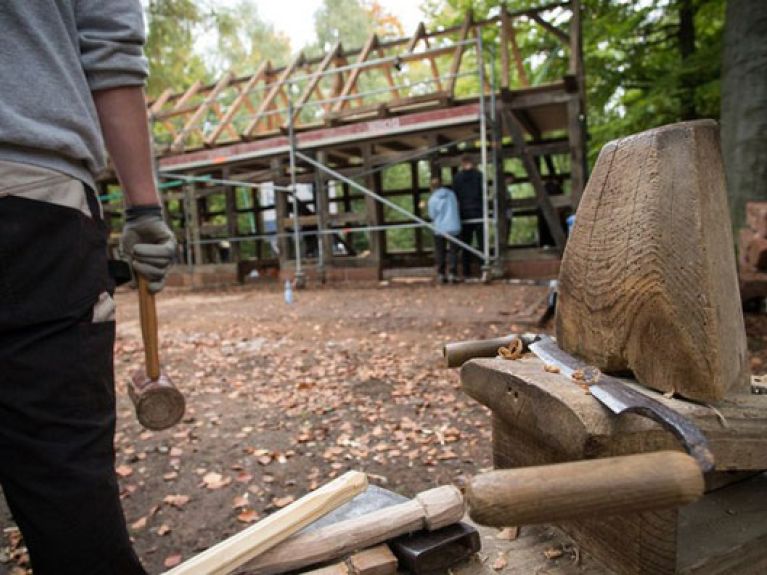Young people preserve old buildings
Young people are helping to protect historical monuments as part of a Voluntary Social Year.

Half-timbered houses are little architectural masterpieces. Each building is unique and adorned with ornate carvings, symbols and sayings. More than a hundred half-timbered houses are stored on the grounds of the Hessenpark open-air museum – broken down into their individual components. They are called “sleeping houses”, and one of them is Haus Frielendorf, which was originally erected in 1850. It is now being rebuilt in Marburg, Hesse, by young people who are serving a Voluntary Social Year at the Jugendbauhütte (Youth Masons’ Guild) Hessen-Marburg. Up until 2015 they will be working on the timber-framed building, which will subsequently serve as an annexe building for a recreation centre.
Jugendbauhütten are organizations set up by the German Foundation for the Protection of Historical Monuments. All over Germany they teach 16- to 26-year-olds the theoretical and practical principles of monument conservation and Europe’s cultural heritage. In this way they are supporting the goals of the International Council on Monuments and Sites (ICOMOS), which declared the International Day on Monuments and Sites in 1982 in cooperation with the United Nations Organization for Education, Science and Culture (UNESCO). It reminds us that the cultural heritage of all peoples is an important asset for humanity, and that its preservation and protection are in the interests of all.
Experience in crafts
Laura Hofrichter now knows that there is much more to monuments than old walls. In the seminars she has attended at the Jugendbauhütte Lübeck she has learned that “sensitivity and faithfulness to the origins are paramount”. Monument conservation “isn’t as easy as you might think, but it’s really exciting, especially when you can be right there, on the spot, live!” Together with other volunteers she has been working on the restoration of a small Renaissance building in the Old Town – making cob (a mixture of clay and straw) with which to stabilize the old walls.
Another important aspect for the volunteers, in addition to the practical work, is the personal and professional prospects that working on historical monuments offers them. 19-year-old Max Giese is doing his period of voluntary work at the Jugendbauhütte Quedlinburg, where he is supporting stucco plasterers, carpenters and roofers in their work. He has already made his decision: “After my voluntary service I’m putting off going to university; I’m going to do a craft apprenticeship first.”
International Day on Monuments and Sites on 18 April

